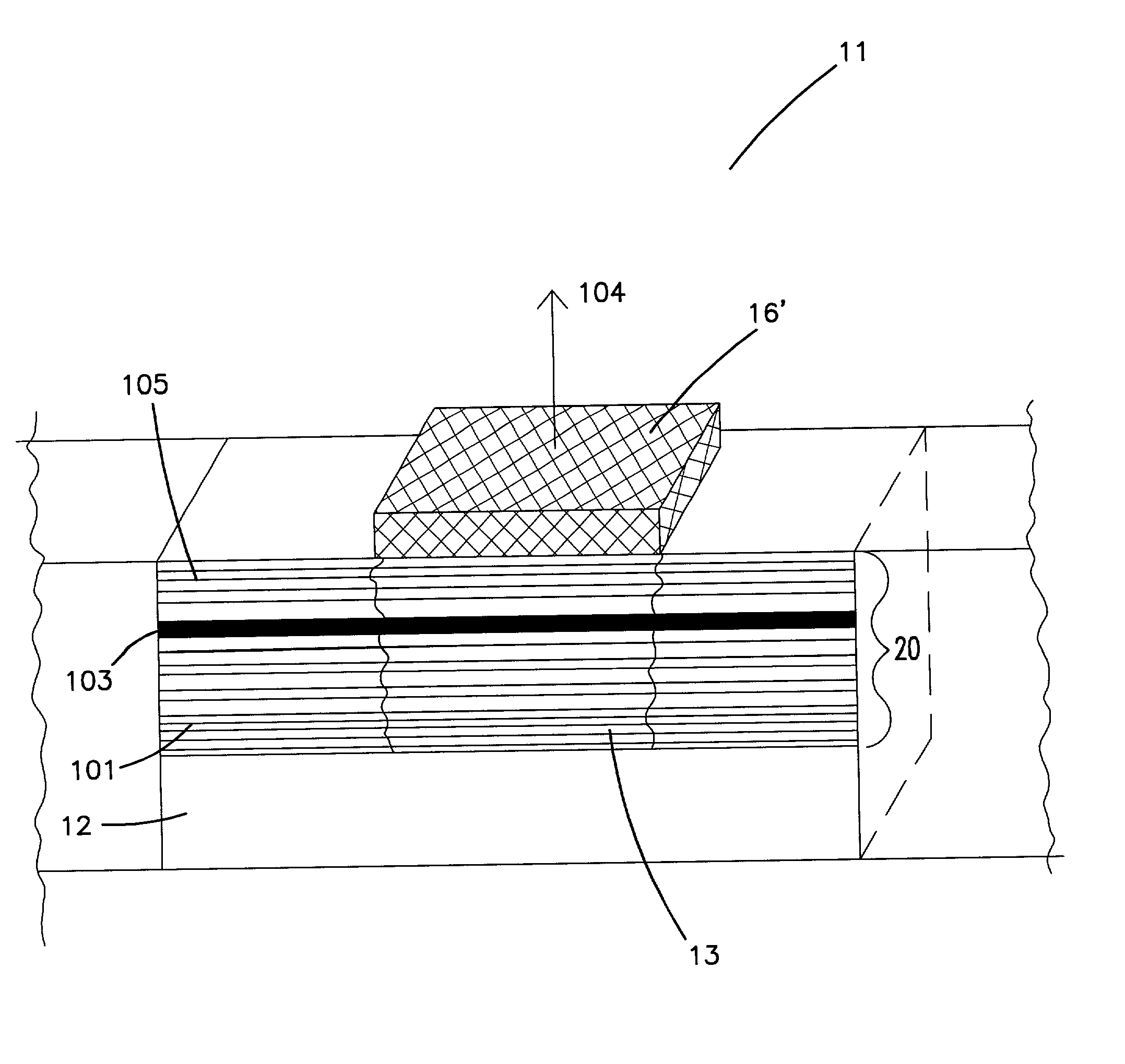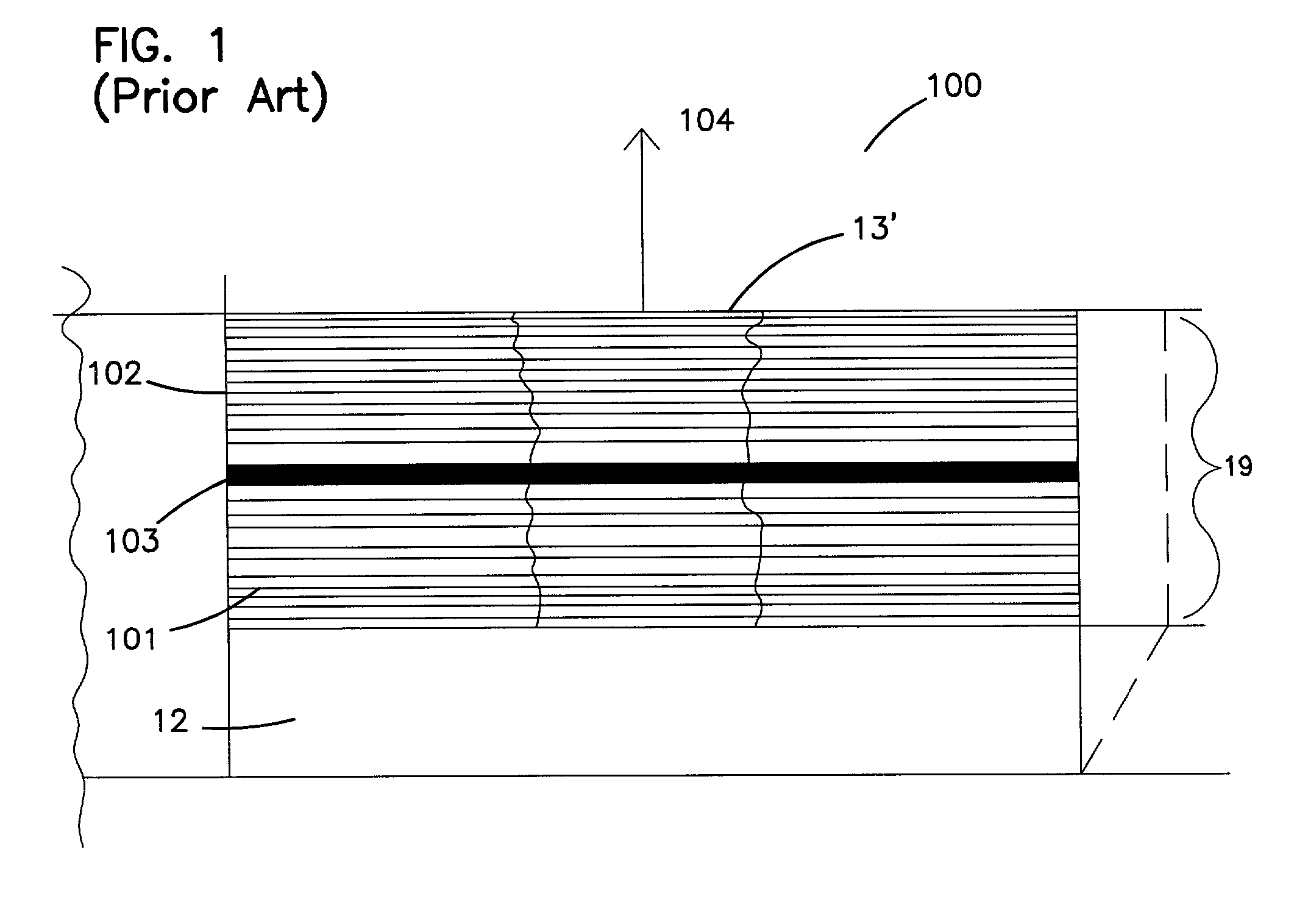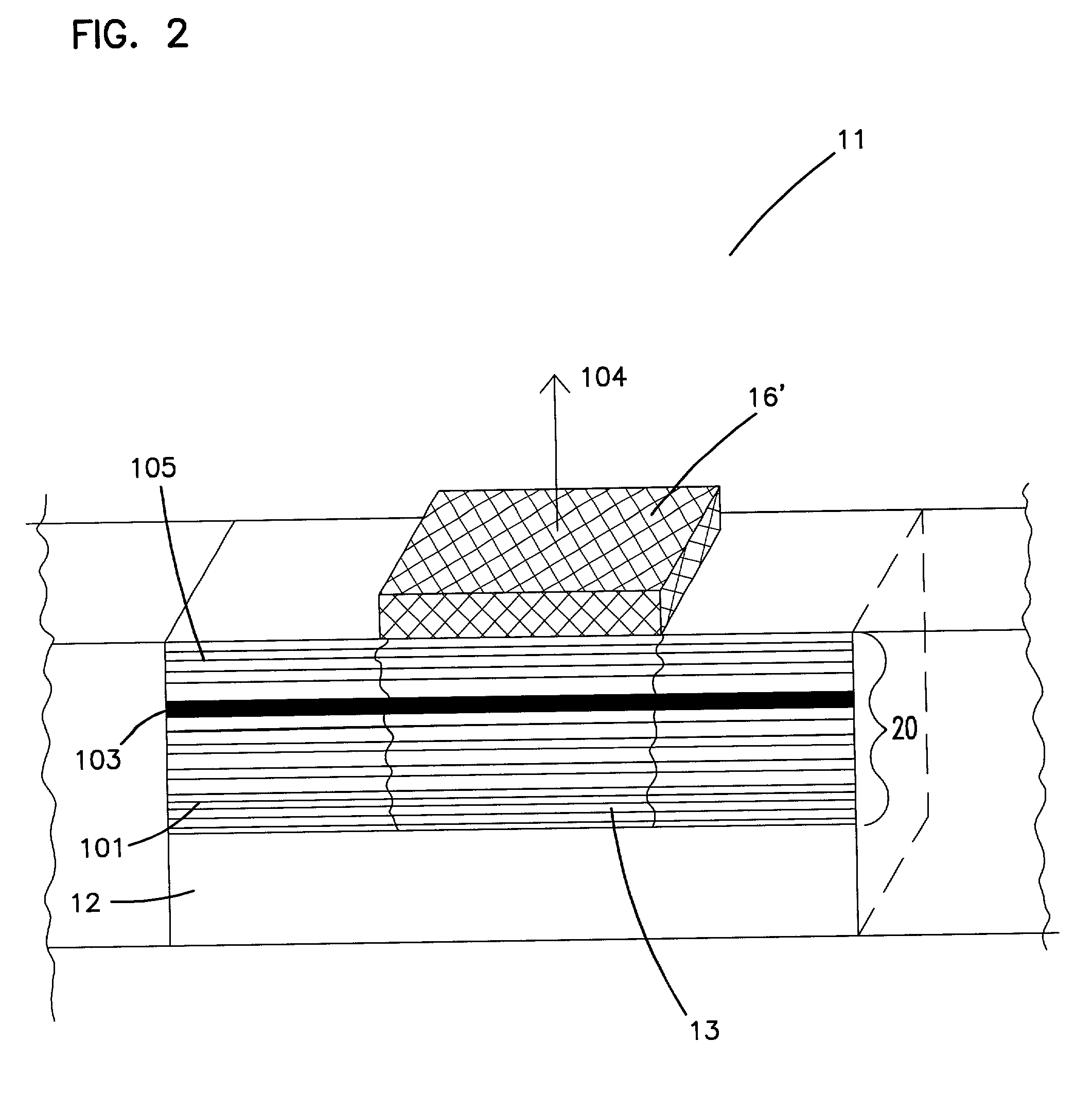Method and apparatus for producing VCSELS with dielectric mirrors and self-aligned gain guide
a technology of dielectric mirrors and gain guides, which is applied in electrical apparatus, semiconductor lasers, laser details, etc., can solve the problems of thermal expansion coefficient, material strain, and complicating fabrication processes and device operation, so as to reduce the resistance in the top dbr, reduce the straggle of implants, and limit the photolithography steps
- Summary
- Abstract
- Description
- Claims
- Application Information
AI Technical Summary
Benefits of technology
Problems solved by technology
Method used
Image
Examples
Embodiment Construction
[0020] While FIGS. 1 through 10 represent single devices, it should be understood that numerous devices can be fabricated on a substrate, for example, in an array arrangement. Additionally, it should be understood that FIGS. 1 through 10 are sectional views, therefore illustrations depicted in FIGS. 1 through 10 can extend into and out of the drawings.
[0021] FIG. 1 depicts a VCSEL 100 of the prior art. As shown in FIG. 1, the VCSEL 100 includes a number of elements: substrate 12, and epitaxial layers 19, which comprises a bottom stack of semiconductor distributed Bragg reflectors (DBR) 101, a top semiconductor DBR stack 102, and an active region 103. Light output 104 is perpendicular to the substrate 12 and is emitted from VCSEL 100 from the laser area 13'.
[0022] VCSEL 100 is fabricated by growing epitaxial layers 19 on the substrate 12. First, bottom semiconductor DBR stack 101 is grown. For example, bottom semiconductor DBR stack 101 can be made of pairs of alternating layers of a...
PUM
 Login to View More
Login to View More Abstract
Description
Claims
Application Information
 Login to View More
Login to View More - R&D
- Intellectual Property
- Life Sciences
- Materials
- Tech Scout
- Unparalleled Data Quality
- Higher Quality Content
- 60% Fewer Hallucinations
Browse by: Latest US Patents, China's latest patents, Technical Efficacy Thesaurus, Application Domain, Technology Topic, Popular Technical Reports.
© 2025 PatSnap. All rights reserved.Legal|Privacy policy|Modern Slavery Act Transparency Statement|Sitemap|About US| Contact US: help@patsnap.com



